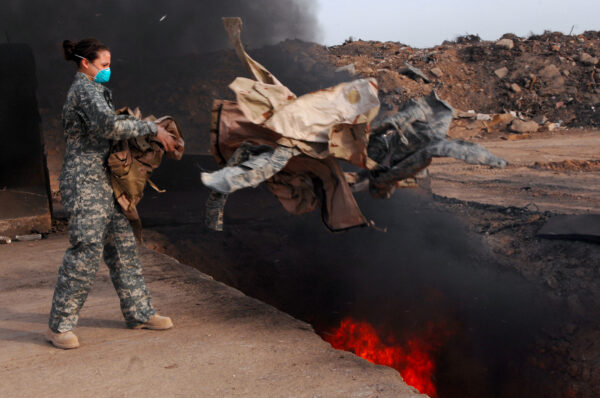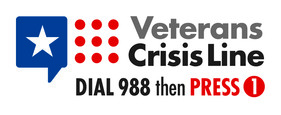
Senior Airman Frances tosses uniform items into a burn pit to ensure they cannot be used by opposing forces. (Photo: U.S. Air Force Senior Airman Julianne Showalter)
In an effort to better understand and address the health impacts of burn pit exposure on Veterans, a new long-term study is using artificial intelligence and wearable monitors to collect real-time health data. The study focuses on Veterans who were exposed to toxic burn pit fumes during the Iraq and Afghanistan wars, where open-air burn pits were used by the military to dispose of materials, including plastics, metal, and biohazardous waste.
Led by pulmonologist Dr. Anthony Szema of Northwell Health, one of New York’s largest health systems, the study remotely monitors Veterans’ health through a wearable device, a smart ring. This technology allows for the continuous tracking of vital signs, including oxygen saturation and heart rate, providing real-time data over several years.
The study is particularly focused on Veterans reporting vague and hard-to-explain symptoms related to respiratory injuries. Many Veterans have experienced health issues such as shortness of breath and chest tightness after exposure to burn pit fumes. The VA links burn pits to various health conditions, including cancer, asthma, emphysema, and sarcoidosis.
The AI-driven study, conducted through standardized screening questionnaires and real-time monitoring, aims to uncover patterns and correlations in health data. The collected information could contribute to a growing body of research on the long-term impacts of toxic exposure from burn pits and potentially lead to the development of new diagnostic tools for lung diseases. Participants in the study are hopeful that the data collected will not only benefit their own health but also contribute to proactive measures for future Veterans.
The significance of the study has heightened due to the exposure of millions of Service Members to burn pit fumes, spanning longer and more extensive wars compared to previous conflicts. The 2022 PACT Act, which facilitates access to health and disability benefits for Veterans affected by burn pit exposure, has already provided support to approximately 3.5 million eligible Veterans. However, there is still a need for screening tools and diagnostic methods to identify and treat related health conditions.
Dr. Szema’s research extends beyond the study, with the development of the Szema Burn Pit Respiratory Questionnaire, an eight-question survey tailored for Veterans exposed to burn pits. The study participants will fill out the questionnaire annually for three years, alongside using continuous pulse oximeters and standardized surveys, to track disease progression and validate the effectiveness of the screening tool.
As the study progresses, its findings are expected to contribute not only to the understanding of burn pit-related illnesses but also to the development of broader screening and treatment options for Veterans outside of the VA healthcare system. Dr. Szema is optimistic that the data collected will help identify undiagnosed illnesses related to burn pit exposure and educate healthcare providers on screening for airborne hazards, including burn pits.












